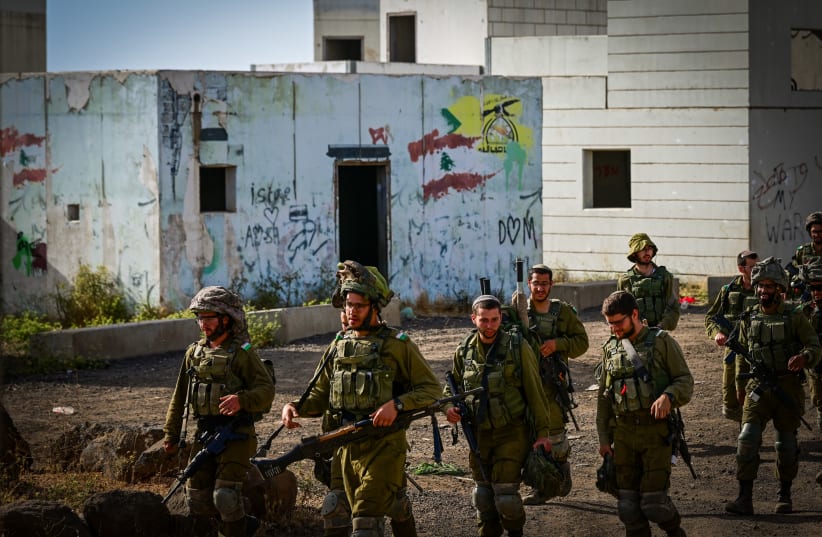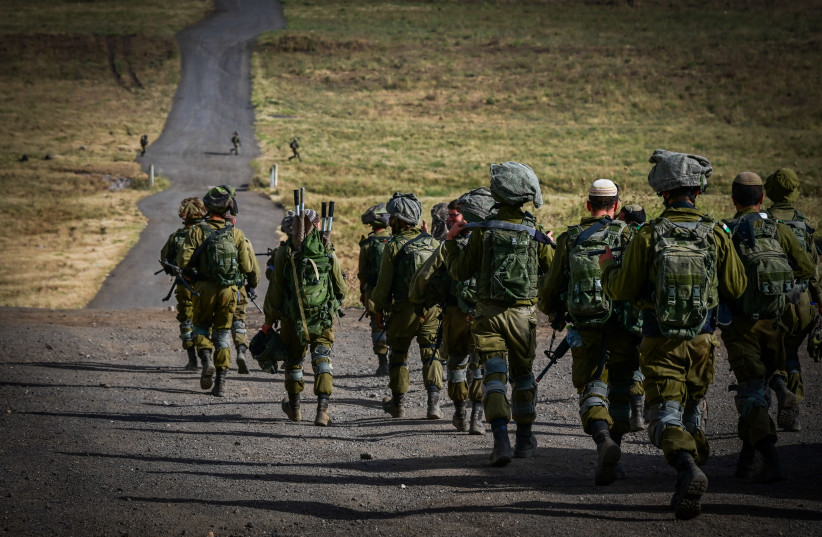The cherry season is at its peak but there is little traffic in the orchards and the fruits are rotting on the branches.
Israelis, unlike every year, are avoiding a pilgrimage north to the self-harvesting orchards in Odem, Merom Golan, Kela, and Elrom. The winds of war gripped the Golan Heights this week with intensity.
Dozens of forest and pasture fires broke out in the northern plateau near Katzrin and up to the western slopes above Kibbutz Gadot.
Hezbollah has been hit in recent weeks by IDF operations. Their desire to respond, to take revenge burns inside them.
Therefore, they chose to increase the range of fire for military targets in the Golan Heights. This is how Hezbollah broadcasts that it is looking for revenge in addition to preparing the fighting space for the day when Israel will make a significant move in Lebanon.
Under new management
A month and a half ago, Col. Benny Kata assumed the position of commander of the 474th Brigade, the brigade that defends the Golan Heights area.
Ostensibly, he should have turned his attention to the east, towards Syria and even deeper into Iraq, but already in the process of taking over the role, he realized that he must also be ready for missiles and UAVs also from the northern theater in Lebanon.
In the weeks he has been in office, almost every day, Hezbollah fired rockets or launched anti-aircraft missiles into the Golan Heights from Lebanon.
80 percent of the forces in the Golan Heights are combat-reserve units. The previous times that the reserve army was in the Golan Heights in such numbers were during the Yom Kippur War and both the first and second Lebanon Wars.
The eastern border with Syria is a fake border. On the one hand, the Separation of Forces Agreement was maintained even during the civil war in Syria during the Arab Spring.
UNDOF forces, entrusted with maintaining the armistice agreement and the separation of forces, act with respectable assertiveness, unlike the UNIFIL forces on the Lebanese border. On the other hand, beneath the false silence, unrest is taking place. Even binoculars for viewing from a distance will not reveal what is taking place.
The Iranians managed to take control of considerable areas in Syria during the days of the civil war.
They sacrificed their lives to save the rule of Assad Jr.
Thousands of Shiite Iranians migrated from northern and western Iran to Syria. In the world media, they are called "pro-Iranian militias". In practice, they are Iranian fighters under the operation of the Quds Force of the Islamic Revolutionary Guards.
"The Iranian proxy was in our eastern arena. We know what the capabilities of Iran and Hezbollah are, and they exist among these militias in Syria and in Iraq as well," said one military official.
This is the reason why Col. Benny Kata and his soldiers work around the clock. On the one hand, the IDF is improving readiness in the Golan Heights, through more training and improving the means for both attacks and warning, as well as improving the line of fortifications and carrying out engineering operations.
The IDF says that the goal is to damage the capabilities of the Iranian militias deep in Syria and even in Iraq. To this end, the army was deployed not only on the Israeli side of the border but also in the security area, which is a section of hundreds of meters, defined as Israeli territory, but it is east of the perimeter fence.
According to foreign publications, the IDF operates every few days in much deeper ranges, both in the outskirts of Damascus, Homs, Quneitra and more.
"We are not evacuating the residents of the Golan. Our defense activity is in the space beyond the fence," says a military official. But in the 747th division, they don't take any risks after October 7.
Along with the offensive defense plans, they are strengthening rear defense systems, including refreshing and strengthening all the standby classes in the settlements. The IDF increased the classes, trained the fighters, and even provided combat equipment that would allow dealing with forces' infiltration into the Golan Heights area.
The decision on whether to go for a ground maneuver in Lebanon may be made at the political level soon.
This is, of course, if we judge by the level of statements and threats heard in recent days. The IDF understands that such a move will open at least one more fighting front in the Golan.

